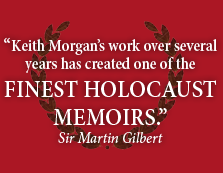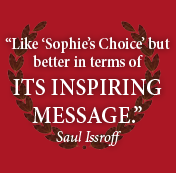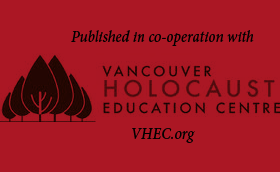Opening Ruta’s Closet
Towards continuing dialogue and education
Within Ruta’s Closet is found a lesson from yesterday that must be learned today and remembered tomorrow.
The book was written to shine a light on a part of the Holocaust with which few people other than historians are familiar.
Co-author Ruth Kron Sigal – the Ruta of the title – spent her last years telling her personal survival story to thousands of high school students. She was determined that her individual experience and that which she shared with her family and ghetto neighbours should continue to be shared for many years to come.
Ruta’s Closet is a powerful legacy and it will extend well beyond the shelf life of a typical book, because of this website. For it is the intent of co-author Keith Morgan and the Sigal family that rutascloset.com will be used to promote dialogue and provide further education about the Holocaust among all age groups.
It will be a LIVE website to which visitors will be encouraged to contribute. Today, it features some basic backgrounders on the book and serves up some food for thought.
However, rutascloset.com will never be a completed website; it will always be as it is intended to be – an important work in progress. Start exploring Ruta’s Closet now by taking a look at the pages on the Home page drop down menu and keep checking back. Please participate in this important discussion.
rutascloset@hotmail.com
What Sir Martin Gilbert said about Ruta’s Closet
The noted Holocaust historian and Winston Churchill’s Official Biographer offers high praise
I have watched the evolution of this book with considerable fascination. Keith Morgan’s work over several years has created one of the finest Holocaust memoirs. It has not been an easy task: memories of so long ago can be fragile and uncertain. But Ruth Kron Sigal – Ruta – was determined that the story should be told, and Keith Morgan worked exceptionally hard to ensure that it was told – to the highest possible standards of readability and accuracy.
We are familiar with many of the great Jewish communities of the pre-war years, and of their fate when they were turned into ghettos and became the scenes of mass murder and deportation. One such place that is less familiar is the Lithuanian town of Siauliai, known in Yiddish as Shavl. The few survivors of that once vibrant Jewish community have often expressed to me their sadness that it does not figure as prominently as it ought in most accounts of the Holocaust. This book redresses that balance.
There is another strength to this book that gives it particular importance today. On a recent visit to Lithuania I was shocked by the unpleasant resurgence of anti-Semitism that belittled the Jewish suffering, and denials of the direct participation of Lithuanians in the mass murder have become quite rampant. Yet this Lithuanian participation during the Holocaust was fully documented by a Lithuanian Commission set up ten years ago when Lithuania was seeking entry into the European Union. Lithuanians today need to know the story that is told so movingly and so powerfully in these pages. They also need to give honour – as Ruta and Keith Morgan do – to those Lithuanians who, facing the hostility and enmity of their neighbours, risked their own lives to save Jews. Among the rescuers whose stories are told in this book was a Catholic priest, Father Adolfas Kleiba, ‘rescuer of Jews’.
These Righteous Among the Nations, of whom more than 760 Lithuanians have been recognised by Yad Vashem in Jerusalem, redeem the grim reality of Lithuanian participation in Nazi crimes, while at the same time enabling us to recognize Lithuanian Christian courage and life-saving achievements at a time when Christian values were being so terribly subverted.
Even as this book tells a harrowing story, shafts of light – of Jewish courage and Christian righteousness – shine through its pages, instructing and inspiring.
The Rt. Hon. Sir Martin Gilbert
19 July 2009





